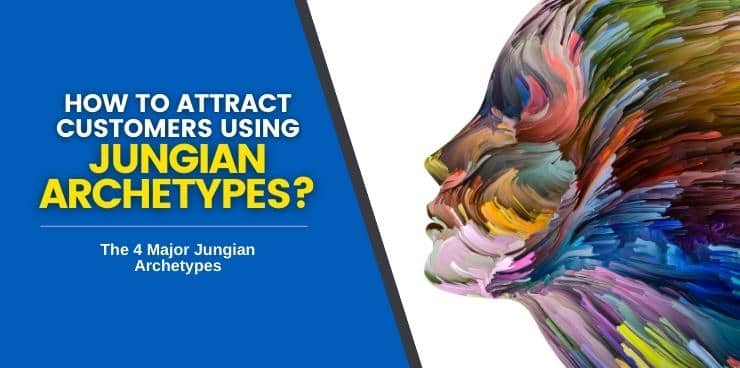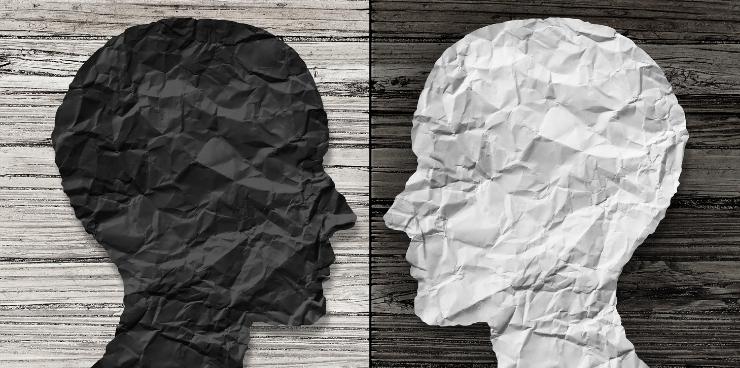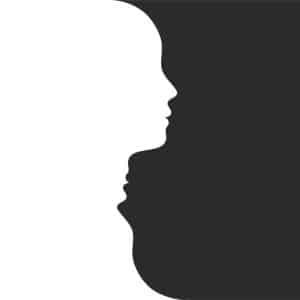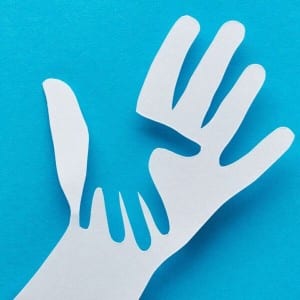
In today’s business world, understanding the psychology of branding is more important than ever. You want to know how to create a brand that resonates with your target audience deeply and subconsciously. Thankfully, you can do that with Jungian archetypes.
All archetypes are universal symbols that reside within the collective unconscious of humanity. Carl Jung believed they were inherited through our DNA and passed down from generation to generation. Sigmund Freud also believed in the existence of these universal symbols, but he viewed them as being products of our psyches instead.
The four major Jungian archetypes are the Self, the Persona, the Shadow, and the Anima/Animus. Effective marketing and branding archetypes include the 12 archetypal figures:
- the Innocent
- the Hero
- the Caregiver
- the Explorer
- the Rebel
- the Lover
- the Everyman
- the Creator
- the Jester
- the Sage
- the Magician
- the Ruler
Read the rest of the article to learn about each of these archetypes in more depth.
Jung’s Archetypes and Their Origins
Carl Jung’s archetypes are a part of his theory of the Collective Unconscious which is a series of universal symbols or images that reside in the psyche. These symbols or images are called archetypes and serve as the basis for our perception of reality.
Jung identified four major archetypes: The Self, the Persona, the Shadow, and the Anima/Animus.
The Self is the archetype representing our true nature and is often referred to as the God within or the Higher Power. The Persona is the mask we wear to conform to societal archetypes, expectations, and norms. The Shadow is the dark side of our personality that we try to keep hidden from others. The Anima/Animus is the archetype that represents our opposite gender and is often referred to as the inner child.
Jung believed that we all have access to these archetypal images and that they play a role in our everyday lives. For example, when we see a movie or read a book, we may identify with the Hero or Heroine on a journey to discover their true identity. This is because the Hero’s journey is an archetype that resonates with our quest for self-discovery.
To become more aware of our archetypal patterns, Jung suggested that we pay attention to our dreams and fantasies. He also believed that artists, writers, and musicians were particularly attuned to the archetypal realm. He acknowledged their work as a source of insight into the human psyche. I truly believe that this is what is so special about the creative partners at the Wizard of Ads™.
I know, I know. You are probably thinking, “Jungian archetypes? What can I do with that?” As a business owner, it is vital to understand that your customers are on their journey. Understanding the archetypal patterns that resonate with them can help create a brand and marketing strategy that will speak to their needs and help them along the path.
For example, let’s say you are a plumber. You could position yourself as the Hero who comes to the rescue when your customers have a plumbing emergency. Or you could be the Wise Sage who helps them prevent problems before they happen or deal with it effectively if it does. Either way, by understanding the archetype that resonates with your customers, you can create a brand image that will speak to their needs and help them on their journey.
So go ahead and take some time to think about your customers’ Jungian archetypes.
What do they need from you?
How can you help them?
Do you need our help?
Understand these things, and you will create a brand and marketing strategy that resonates with and helps them along their journey.

Distinctions between Jung and Freud
Understanding several distinctions between Jung and Freud is significant to understanding Jung’s theory.
First, unlike Freud, Jung did not believe that libido and sexuality were specific to sexual gratification. Instead, he saw them as general life energies that could be expressed in several ways.
Freud also believed that the nature of the unconscious was largely negative, while Jung saw it as primarily positive. In other words, Freud believed that the unconscious was mostly made up of repressed desires and fears, while Jung believed it was also the source of our creativity and spirituality.
These two positions are reconciled in my research around the disposition of the person at any given time. For those in Survival Mode, fear, shame, and guilt take precedence. For those in Thriving Mode, identity, purpose, and adventure are at the forefront.
Third, Jung believed that the cause of behavior was not always solely based on experience, as Freud did. Rather, he saw it as often being based on instinctual drives that are innate and universal.
Fourth, Freud believed that the goal of psychoanalysis was to make the unconscious conscious. Jung, on the other hand, believed that the goal was to achieve a balance between the conscious and unconscious.
Finally, while Freud saw psychoanalysis as primarily a treatment for mental illness, Jung saw it as a way to promote personal growth and development.
Keep in mind that Jung did not completely reject Freud’s ideas. In fact, he actually built upon them and developed his unique theory of personality.
One of the key concepts that Jung developed is the idea of the collective unconscious. The collective unconscious is a part of the psyche shared by all humans. It contains archetypes or universal symbols and patterns stored in the unconscious mind.
Jung believed that archetypes were inherited from our ancestors and passed down through the generations. These archetypes influence our behavior and thoughts in ways we are unaware of.
For example, one of the most famous Jungian archetypes is the Hero. It is a symbol of someone who overcomes obstacles and emerges victorious. It is often seen in stories, myths, and legends.
The Hero archetype can influence our behavior in many ways. For instance, it can lead us to take risks and pursue our dreams. It can also make us feel we must prove ourselves and our worth to others.
The 4 Major Archetypes
Archetypes are models of people, behaviors, or personalities. Different archetypes emerge in different situations and at odd times throughout history. One such archetype is Carl Jung’s archetypes list, which includes:
- The Persona
- The Self
- The Anima/Animus
- The Shadow
The first two–the Persona and the Self– are considered positive aspects of the human psyche. The last two–the Anima/Animus and the Shadow– are often seen as negative aspects by Jung. However, each archetype plays a crucial role in our lives and can help us better understand ourselves and others. It can even help your business’s bottom line by helping you understand your customers’ underlying felt needs.
All wants and desires are simply an expression of an underlying felt need.
-Ryan Chute
One way to think of human archetypes is as patterns of behavior that we see on repeat throughout history. Carl Jung created many different personality archetypes, but this section will go over the four major ones that are the foundation of his theory.
The Persona (or Mask)
The Persona is the mask we wear to adapt to the outside world. It is not our true Self but how we want others to see us. We all have multiple Personas, each one adapted to a different situation. For example, we might act differently at work than at home.
Another example… Let’s say you are in the HVAC industry. You might have a Persona that is all business when talking to potential customers about their heating and cooling needs. But when you are around your family or friends, you might let your hair down a bit and be more relaxed.
The Persona is based on our values and beliefs, including the limiting ones. It is the face we show to the world. It is how we want others to see us.
We usually put on a persona when we are not our true selves. It can be exhausting and cause us to feel disconnected from who we really are. Taking breaks is essential to check in with ourselves and ensure our Persona is not taking over our lives.
When it comes to marketing, the Persona you create for your business should be based on your target audience. You want to make sure that you connect with your target audience personally and that they can see themselves in your brand.
Creating a Persona for your business is a vital piece of the marketing process. It will help you connect with your target audience and ensure you reach the right audience with your message.
Creating a Persona is a helpful exercise for any business, big or small. It can help you create marketing campaigns that are more targeted and effective. And it can help you better understand your customer Persona types so that you can provide them with the products and services they really need…birds of a feather, as they say.
 The Anima/Animus
The Anima/Animus
The Anima/Animus is the archetype that represents the opposite gender within ourselves. We all have both masculine and feminine qualities within us, and the Anima/Animus is the archetype that symbolizes those qualities. However, one is usually more developed than the other.
The Anima/Animus can also play a role in our career choices. We are drawn to careers that allow us to express the qualities we lack. For example, a man who is not in touch with his feminine side will be drawn to a career that allows him to be more nurturing, such as teaching or social work. Similarly, a woman who is not in touch with her masculine side will be drawn to a career that allows her to be more assertive and independent, such as in business or law.
The Anima/Animus in marketing embodies all the qualities we associate with a particular gender. Like, in advertising, women are often portrayed as being emotional, nurturing, and in need of protection, while men are often portrayed as being rational, independent, and in need of power.
The Anima/Animus can be a significant tool for understanding our behavior and the behavior of others. However, it is crucial to remember that not everyone fits neatly into these archetypes list and that people can exhibit qualities associated with both genders. It is also important to avoid stereotyping or making assumptions about someone based on their gender.
The Shadow
The Shadow is the part of ourselves that we are unaware of, repress, or are ashamed of, and try to hide from others. It contains all the qualities we dislike about ourselves and try not to show to others. We all have a Shadow, and it is often the source of our negative emotions like fear, anger, jealousy, and self-loathing.
Jungian analyst Marie-Louise von Franz says, “The Shadow is simply the thing a person has not yet become.” What she means by that is the Shadow contains all the qualities and aspects of ourselves that we have not yet accepted or integrated. We are still working on these parts, and often, they show in our dreams and fantasies.
The Shadow can be a source of great creativity because it is usually where we find our hidden talents and gifts. It can also be a source of great darkness because it is where we find our fears and wounds, too.
In marketing, the Shadow is often used to sell products that appeal to our fears and insecurities. For example, many diet products are marketed with the promise of helping us get rid of our flaws and become perfect.
The problem with this approach is that it does not work in the long term because it does not address the root cause of our issues. To truly heal our Shadows, we must first accept them as part of ourselves. Only then can we begin to work on integrating them into our lives healthily.
The Self
The Self is the central archetype in Jungian psychology. It is the part of our psyche representing our true nature and our potential for wholeness. It is who we are at our deepest level and what we strive to become.
Jungian analyst Robert Johnson describes the Self as, “The central pattern of our personality around which our lives are woven.” It is the total of who we are and what gives us our unique identity.
The Self is often symbolized by the sun. Just as the sun is the center of our solar system, the Self is the center of our psyche. Just as the sun gives life to everything in its orbit, so, too, does the Self give life to everything in our psyche.
When we live in alignment with our Self, we experience a sense of wholeness, wellbeing, and vitality. We feel like we are living our best life and doing what we mean to do.
However, when we are not living in alignment with our Self, we can feel like something is off. This may manifest through a sense of dissatisfaction, unhappiness, or even depression.
You can use the Self in marketing in many ways. For example, you can use it to connect with your audience more deeply. You can also create more meaningful and impactful campaigns and ultimately sell more products or services.
When you understand how to use the Self in marketing, you can create campaigns that speak directly to your audience’s deepest needs and desires. You can create ads that resonate on a much deeper level. Ones that people will remember long after they see them.
The 12 Archetypal Figures/Images
Besides the four main Jungian archetypes, 12 more are often widely used for marketing and branding. They help create an identity for a product, company, or individual.
All of these would be equally effective in terms of marketing and branding because they all tap into a person’s deep, subconscious desires.
The Creator
Imaginative, inventive, and always looking for new ways to express themselves.
Creators are often artists of some kind, but they do not have to be. They are simply people who see the world in their unique way and feel a need to share that vision with others.
The Ruler
Authoritative, ambitious, and always striving for power.
Rulers are the natural leaders of the world. They are the ones who always strive to be in charge, and they are usually very successful at it.
The Magician
Mystical, intuitive, and always seeking knowledge.
Magicians are often drawn to the unknown and seek to understand the hidden forces at work in the world. They are also natural leaders with a strong sense of vision.
The Lover
Passionate, sensual, and always searching for intimacy.
Lovers are driven by their emotions and desire a close connection with others. They are often romantic and view love as one of the most significant things in life.
 The Caregiver
The Caregiver
Compassionate, nurturing, and always wanting to help others.
Caregivers are the heart of their families and communities. They are often the ones who step up in times of need and always put others before themselves.
The Jester
Playful, lighthearted, and always up for a good time.
Jesters are the life of the party. They enjoy making others laugh and generally have a positive outlook on life. Jesters are also known for being impulsive and spontaneous.
The Sage
Wise, knowledgeable, and always seeking truth.
Sages are lifetime students who are constantly seeking knowledge. They are often introspective and deeply philosophical. Although they sometimes come across as aloof, they are usually very kindhearted and benevolent.
The Innocent
Pure, trusting, and always seeing the best in others.
Innocents are the epitome of goodness. They are often childlike in their innocence and naivete, but this only makes them more lovable. They see the best in people and always try to bring out the best in others.
The Everyman
Relatable, down-to-earth, and always just trying to make the best of life.
The Everyman is the everyman. They are the characters to who the audience can most easily relate. They are just trying to make their way through life and do not always make the best choices. But they mean well, and that is what counts.
The Hero
Courageous, determined, and always fighting for what is right.
The Hero is the archetypal journeyman who sets out on a quest to find something of value. The Hero faces many challenges along the way but ultimately triumphs and learns something important about themselves in the process.
We all have the potential to be Heroes. We must find our quest and follow it through to the end.
The Rebel
Nonconformist, independent, and always challenging the status quo.
Rebels are those who march to the beat of their drum and refuse to conform to societal norms. They are usually seen as disruptive or controversial but also bring about change. They are also often misunderstood because they do not fit neatly into any specific category.
We all have the potential to be rebels. We need to find our cause to fight for and be fearless in the face of opposition. Who knows what we might discover about ourselves along the way.
The Explorer
Curious, adventurous, and always seeking new experiences.
Explorers are thrill seekers. They are always looking for new adventures and new challenges. They are bold and daring and are never afraid to take risks.
Explorers are also independent and resourceful. They are comfortable going off the beaten path and striking out alone. And they are always up for a new adventure, no matter where it might take them.
So if you are looking for an adventure, bring out the Explorer in your brand. Your customers will be more than happy that you showed them the way.
Are you interested in using all these archetypes for your brand or business? Then look no further than to Wizard of Sales®. We can help you find the perfect archetype for your business, and we will even show you how to use it to your advantage. Book a demo today.
- Futuristic Game for the Ad Masters - July 11, 2024
- Classical Conditioning: Pavlov’s Dog in Advertising - June 20, 2024
- Hear, See, Speak No Advertising - June 9, 2024
